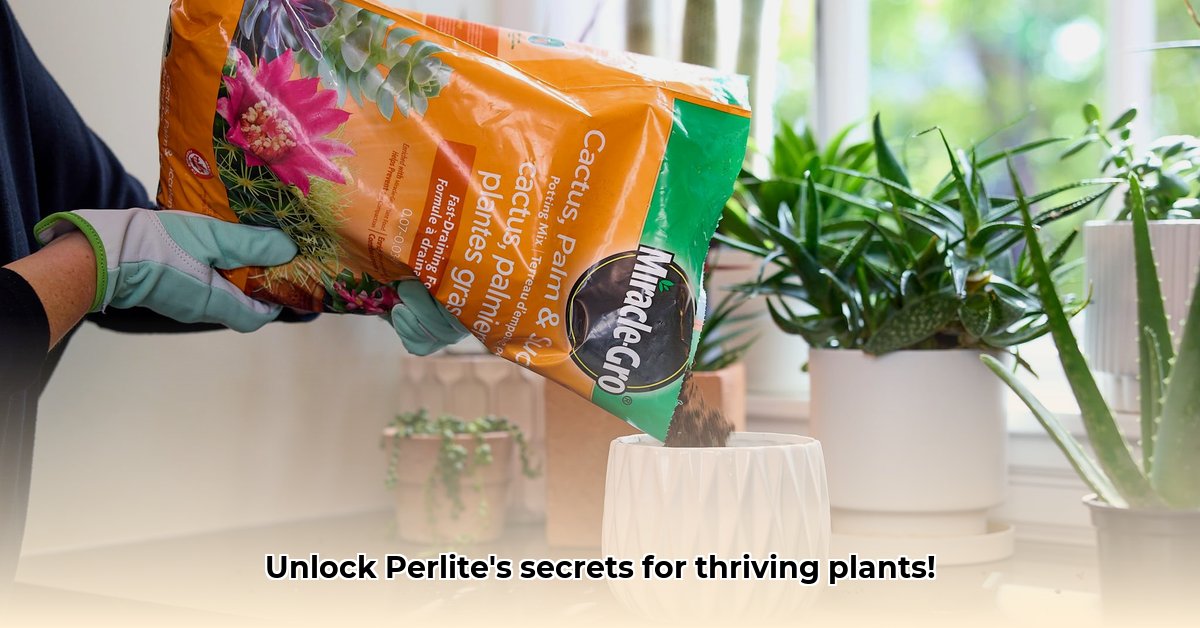
Let's examine perlite, a popular soil amendment in horticulture. While known for improving soil aeration and water retention, its sustainability is a complex issue. For raised bed options, check out these resources. This guide explores perlite's pros and cons, offering actionable advice for both home gardeners and horticultural businesses seeking sustainable practices.
Perlite's Advantages in Sustainable Horticulture
Perlite, a volcanic glass, offers several benefits for plant growth. Its porous structure promotes excellent aeration, crucial for healthy root development. This airy texture also aids in temperature regulation, protecting roots from extreme temperatures. Furthermore, perlite enhances drainage, preventing waterlogged conditions. Finally, it improves water retention, reducing the frequency of watering. These properties contribute to healthier plants and potentially increased yields.
Environmental Considerations: Perlite's Impact
Despite its benefits, perlite's production and use have environmental implications. Mining perlite requires energy, contributing to greenhouse gas emissions. The processing and transportation further add to its carbon footprint. Critically, comprehensive lifecycle assessment data for perlite remains scarce, hindering a complete understanding of its overall environmental impact. This lack of data makes definitive sustainability assessments challenging. Further research is crucial to better understand the total environmental burden.
Sustainable Alternatives and Best Practices
Fortunately, sustainable alternatives are available. Coco coir, a renewable resource from coconut husks, provides similar benefits. Vermiculite, another naturally occurring mineral, offers comparable aeration and water retention. Compost, a readily available and nutrient-rich option, further enriches the soil. These alternatives minimize the environmental impact compared to perlite.
Even if using perlite, several steps can mitigate its environmental footprint. Prioritize locally sourced perlite to reduce transportation emissions. Explore recycling or composting options for used perlite, avoiding landfill disposal. By promoting responsible sourcing and disposal, we can lessen the environmental consequences.
Actionable Steps for Sustainable Perlite Use
Below are actionable steps for both horticultural businesses and home gardeners:
For Horticultural Businesses:
- Sustainable Sourcing: Choose suppliers with transparent and sustainable practices, from mining to delivery. Seek certifications demonstrating their commitment to environmental responsibility.
- Alternative Exploration: Experiment with coco coir, vermiculite, or compost as alternatives or partial replacements for perlite. Evaluate their effectiveness and cost-benefit ratios.
- Lifecycle Assessment: Commission a lifecycle assessment for perlite use within your operation to quantify and reduce environmental impacts. This data will provide a targeted, effective sustainability strategy.
- Waste Reduction: Implement strategies for recycling and reusing perlite, creating a closed-loop system to minimize waste.
For Home Gardeners:
- Informed Purchasing: Opt for perlite from companies transparent about their sustainable practices. Look for labels or detailed information about their environmental commitment.
- Soil Management: Focus on improving soil health to reduce the need for perlite. Proper soil care reduces reliance on amendments like perlite.
- Responsible Disposal: Dispose of used perlite responsibly. Explore local recycling or composting options. Check your local waste management guidelines.
- Alternative Selection: Consider coco coir or vermiculite as viable and more sustainable alternatives to perlite.
Conclusion: A Balanced Approach to Growing Media
Perlite's use in horticulture presents a trade-off: beneficial properties versus environmental concerns. A holistic approach, considering the entire lifecycle of growing media, is key. By utilizing sustainable alternatives, prioritizing local sourcing, and implementing responsible disposal practices, we can move toward a more environmentally conscious approach to horticulture. Further research and industry collaboration are essential to improve perlite's sustainability profile and guide responsible decision-making. The future of horticulture relies on making informed choices that balance plant health with environmental stewardship.